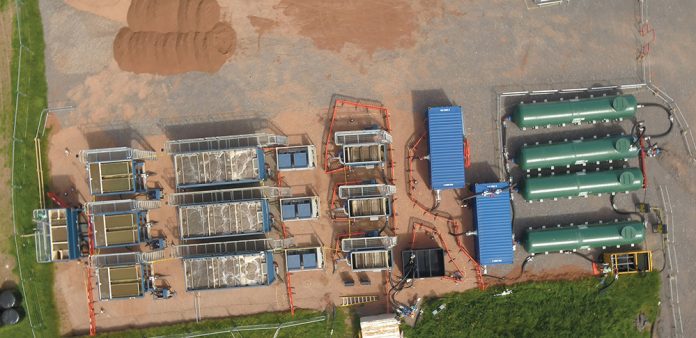With the current environmental pressures that are rightly placing the protection and enhancement of our waterways at the forefront, it is important that we demonstrate the agile ability of the industry to provide more responsive environmental resilience. Here, Rich Matthews, MD at Siltbuster, explains that to achieve improved confidence in the public, political and regulatory landscapes, now is the time to adopt a more flexible approach to maintaining and upgrading our ageing asset base.
Too often the industry has sought to engage the wider supply chain for site investment planning, but is frequently reverting to type of adopting traditional and conservative build methodologies, procurement strategies and design standards. This has often precluded the opportunities that may well have been presented of adopting more flexible based solutions around package plants. This is something that is widely practiced in the wider industrial sectors.
With the diverse range of conditions in 2020 – from the floods in February, COVID in March through to the heatwaves in the summer it has demonstrated the need for reliable infrastructure systems that can flex and adapt. As a result, it is essential that we continue to seek more efficient means of capital investment and operational support programmes, relying on effective and responsive environmental resilience. This is where adopting more package plant solutions will offer this flexibility; being able to respond and maintain compliance in support of ageing infrastructure.
Reality of Ageing Infrastructure
Whilst the ageing infrastructure is being firmly put under the spotlight for spill regimes and water quality performance; we cannot continue to blame previous under investment when we are now over 30 years post privatisation that promised unrivalled levels of previous investment. However, value for money of this investment must be questioned when water quality standards are so publicly being questioned. There is no doubt that drinking water quality remains at the forefront of excellence and un-comparable to bottled in both quality achieved and price per litre. However, the public now seeks similar levels of focus on effluent treatment.
The performance of Britain’s sewer network is a focus of attention for drainage studies right now, however the importance placed on capacity rather than quality should be questioned. It is true that CSO’s are there to ensure relief to the system to protect upstream catchments from flooding. Nevertheless, the reality is that we are continuing to place existing and ageing assets under un-due stress. This is exacerbated with centralisation strategies and a lack of engagement with tightening Mogden consents. To reinforce the simplicity, treat at source, treat locally applies to all aspects of our effluent network and not just a concept to deflect to the agriculture contributions.
There is therefore no greater need for showing an alternative rationale for the industry to maintain compliance without compromise. We cannot simply build traditional methodologies or defined end of pipe solutions. There is a need to build more catchment-based solutions.
The result is that a more modular based package plant will enable a more phased and targeted investment plan, that is undoubtably going to be needed to ramp up with immediate effect to regain public support in an industry under pressure.
Raising the bar or adopting proven technology
As the regulator is now seeking for the industry to reduce pollution incidents by 30% by 2025, the reality of demonstrating improvements is critical as far as is reasonably practical. Clearly there is a reach for new technology innovation; however there remains many examples of using proven technology in more novel applications. This is where the deployment of package plant systems have the ability to fulfil this requirement. The barrier to acceptance has often been concerns with design life, applying imperial standards and lack of willingness – none of these will apply in the reasonably practical debate that will now shortly being.
Consequently, there is a need to adapt to a more responsive approach; modular build is a principle well suited to the industry needs. Modular solutions don’t have be new technologies and processes; it can involve simply thinking about things differently and thus using familiar technologies in smarter, more strategic ways. It is essential that any investment in water treatment is best placed to support current needs, as well as those in the future. This might mean building asset bases in an incremental manner or bolting on assets to optimise asset bases. The important thing is that it all adds up to achieving a more sustainable outcome for the industry and environment
Summary
To drive a successful response to the pressure the industry faces, there is a need to approach it with flexibility in mind. The political conditions will insist that this step change occurs, it is therefore time to change our approach to traditional build and procurement and it is important that the supply chain is engaged effectively to ensure that the experience, skills and knowledge in responsive treatment systems can be best utilised for the benefit of enhancing the water environment.
For more information about Siltbuster, visit www.siltbuster.co.uk



